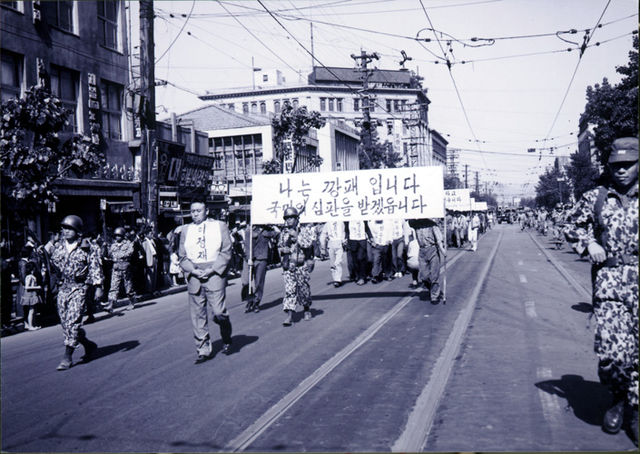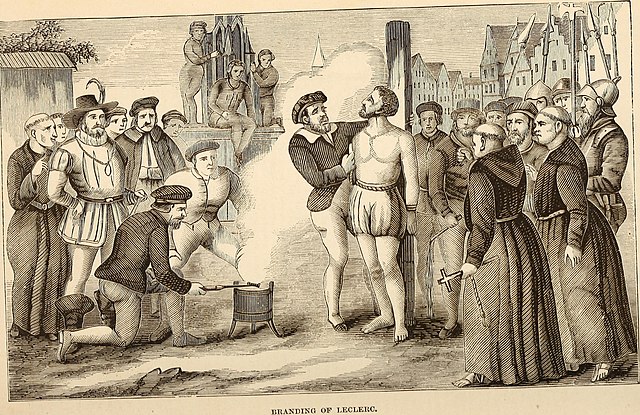Public humiliation or public shaming is a form of punishment whose main feature is dishonoring or disgracing a person, usually an offender or a prisoner, especially in a public place. It was regularly used as a form of judicially sanctioned punishment in previous centuries, and is still practiced by different means in the modern era.
South Korean gang leader Lee Jung-jae being shame-paraded by Park Chung Hee's military regime (1961).
Pillories were a common form of punishment.
Paris, 1944: French women accused of collaboration with Nazis had their heads shaved and were paraded through the streets barefoot.
Public foot whipping in Iran
Human branding or stigmatizing is the process by which a mark, usually a symbol or ornamental pattern, is burned into the skin of a living person, with the intention that the resulting scar makes it permanent. This is performed using a hot or very cold branding iron. It therefore uses the physical techniques of livestock branding on a human, either with consent as a form of body modification; or under coercion, as a punishment or to identify an enslaved, oppressed, or otherwise controlled person. It may also be practiced as a "rite of passage", e.g. within a tribe, or to signify membership of or acceptance into an organization.
Modern strike branding
Branding of a naked enslaved woman in Africa
Branding of the Huguenot John Leclerc during the 16th century persecutions.
Whipping and branding of thieves in Denmark, 1728








